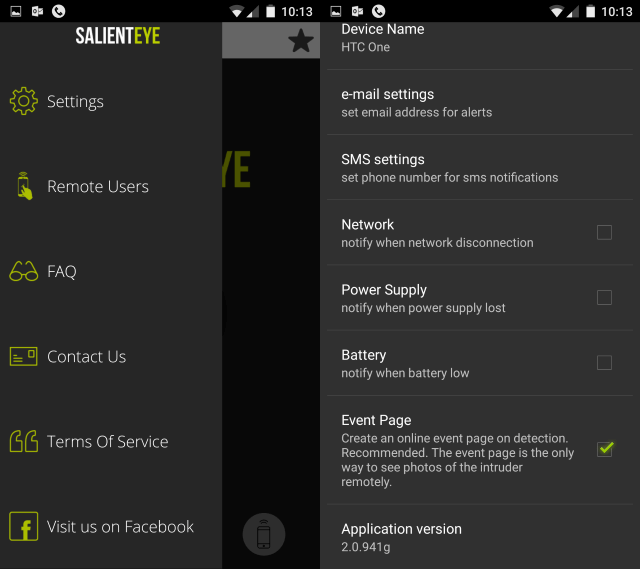Need to keep a watch in your house but do not have DIY skills or the funds to install a security camera? For those who are in possession of an extra smartphone or tablet PC as well as a classic one taking up space in the trunk of a drawer, it is possible to forget attempting to drill a straight hole and spending cash.
A great collection of programs can be found for Android users to repurpose their apparatus as security cameras, capable of remotely upgrading you when intruders are found.
Old Smartphone Webcams: Not a New Thing
We’ve previously illustrated how to create a network of security cameras from old smartphones, and this remains a great way of doing it on a budget, regardless of whether your device runs Android, iOS, Windows Mobile (if you still have one of these old devices, plenty of useful apps are still around), or BlackBerry.
As long as there is a suitable app for converting the device into an IP webcam, you can use it. This is a great way to go, too, as the software you choose to view your webcams can be configured to alert you when movement is detected.
For a stripped back approach, meanwhile, one that doesn’t required a central PC managing the feeds and storing images (potentially using valuable hard disk space), Salient Eye is a strong alternative.
But Hold on, It’s Not a Webcam!
Salient Eye, available free from Google Play, (an iOS version is planned, seewww.salient-eye.com for more) doesn’t give you the usual IP webcam functionality that is expected from security camera apps. Instead, the app snaps photos and plays a pretty loud alarm when it detects movement. Images are then saved to your device and you can specify an email address or SMS number for them to be sent to.

Compatible with Android smartphones and tablets alike, Salient Eye is also capable of running with a low energy profile for up to 10 hours on the phone’s battery and remains active when the display is off. You can see in the image above where it has detected objects, highlighted in red, and distinguished them from the wall. Any change in these items, and the motion detection will raise the alarm and send an email.
Setting up a smartphone security camera with Salient Eye is simple.
Making a Smartphone Security Camera with Salient Eye

Run the app to get started and head straight for the Settings screen in the menu. Here you should set a Disarm Password, as well as select which Camera you want the app to use. In the examples here I’ve used the front-facing camera.
You should also add your email address under e-mail settings, and if you want SMS notifications, add the relevant phone number to SMS settings. Notice that there are options to set notifications for Network disconnection, low Power Supply, and low Battery. Most important here, however, is to set an Event Page, where the images of your intruder will be uploaded. Check the box, and the page will be created automatically.
The Salient Eye video tutorial is also worth watching.
On the main screen, tap the email icon to instruct the app to send intruder notifications to you via email, and tap the camera lens graphic in the middle of the display to arm the app. Note that you have 30 seconds to clear the area by default, although this can be tweaked in Settings.
When Salient Eye detects motion, an alarm will sound, and images of the intruder uploaded. With the email or SMS notification enabled, you’ll receive a link to view the images online, wherever you are. Pretty useful!

Salient Eye also has a remote option that enables you to check what is happening from another device using the Salient Eye Security Remote app, also free.
To use remote, you’ll need to sign into the same account you created on the first device (that is, when you added an email in the Settings screen) and this can be used to remotely arm and view photos from Salient Eye, rather than wait for the email or SMS notification.
Other Smartphone Security Camera Apps
Salient Eye is a strong app, but isn’t the only option for those with spare or old smartphones and an interest in home security. Others include:
AtHome Camera:Â offers remote monitoring over 3G/4G or WiFi, has motion detection, two-way talking, scheduled recording, and is multiplatform.
Smart Home Security WardenCam:Â this app offers much of the same functionality and is also free, but its unique selling point is probably the utilization of cloud storage support, specifically Dropbox.
Smartphone security camera apps have clearly evolved, and by utilising remote servers and cloud storage, they can prove extremely useful. Whether you’re using an old smartphone or you have a spare knocking around, if you need to keep tabs on a room, pet, or little person, then these apps warrant further investigation. And don’t forget, an old phone isn’t the only way to build a home security camera system. You might use a collection of webcams connected to a desktop PC, oreven a Raspberry Pi.
via MakeUseOf
